Romanian frigates in the 21 century. Part one
Kings and queens
As you already know from the previous parts, the frigate Mereshesti (F 111) for almost 20 has been the only and largest military ship for all the beauty and pride of the entire Romanian people. history Romanian Navy.
Therefore, from 1985 to 2004, this ship was the flagship of the Romanian Navy, until it included the “royal couple”: frigates “Reggele Ferdinand” and “Regina Maria”. It was then created flotilla frigates (Flotila de fregate) and Marasesti gave way to the flagship Ferdinand.
British retirees or “The second part of Marlezonskogo ballet”
14 January 2003 Romania signed a contract with Great Britain, the subject of which was the purchase of two 22 (Type 22) type frigates for the needs of the Romanian Navy. It was about buying HMS Coventry (F98) and HMS London (F95) for “XSUM million pounds sterling. The ships were not new: they were commissioned in the 116 year and were withdrawn from the British Navy in the 1986 year.
This contract has become part of an international scandal. It all started with the fact that in the 1997 year, the United Kingdom reduced the size of the Royal Navy from 137 to 99 ships, and the ships that were withdrawn from the Navy were put up for sale. The so-called “shadow” secretary of defense and future secretary of defense, the British conservative Liam Fox, published in the prestigious daily newspaper “Daily Mail” an article in which he accused the official London that the proceeds from the sale of 38 ships amounted to 580 million pounds Sterling. Of this amount, one-fifth (116 million) was money for the sale of all 2 ships to Romania, and of the 116 million sent by Romania, only 200 thousand pounds reached the UK budget. Profitable, however, a deal!
Liam Fox blamed the well-known British campaign BAE Systems plc for fraud and damage to the state. Apparently, they threw the "fox" and did not share it, but he raised a howl in the press ...
* Fox (English) - Fox.
Patrimony
There is little written about this type of ships in Russian, so I post everything that I found, translated and systematized.
22 type frigates (Type 22 Broadsword) is a class of frigates built for the needs of the Royal Navy of Great Britain. They were built in three series, each series (subclass) differed both in displacement and technical equipment, installed power plants and weapons.
A total of 14 frigates of the type “22” were built:
1 series (Batch 1): 4 of the ship of the “Broadsword” subclass stand. a tonnage of 4,400 tons (tail number F88 - F91);
2 series (Batch 2): 6 ships of the “Boxer” subclass stand. a tonnage of 4,800 tons (tail number F92 - F98);
3 series (Batch 3): 4 ship subclass “Cornwall” stand. tonnage 5,300 tons (side numbers F99 - F87).
After reducing the number of the Royal Navy 7 ships of the first 2-series were sold and are in service with the following states:
Brazil 4 ships: “Greenhalgh” (ex-Broadsword), “Dodsworth” (ex-Brilliant), “Bosísio” (ex-Brazen) and “Rademaker” (ex-Battleaxe);
Chile: 1 ship: “Almirante Williams” (ex-Sheffield);
Romania: 2 ship: Regele Ferdinand (ex-Coventry) and Regina Maria (ex-London).
More 2 frigates were used as target ships and sunk, and the remaining 5 were scrapped.
For many years, the Turkish company LEYAL Ship Recycling Ltd. has been engaged in the disposal of scrapped ships of Her Majesty. It is one of the largest specialized companies and its capacities allow processing up to 100 thousand tons of ferrous and non-ferrous metals per year.
One of the frigates sold to Romania, namely Coventry (F98), during its service under the British flag, passed 348,372 nautical miles and spent more than 30 thousands of running hours at sea.
Another ship sold to Romania, HMS London (F95), was the flagship of the Royal Navy during the first Gulf War. The other two frigates of the first series (HMS Brilliant and HMS Broadsword) participated in the war between Great Britain and Argentina for control of the Falklands.
During the Falkland conflict, the HMS Broadsword (F88) was damaged, but was repaired. 11 years later, Broadsworth reappeared on the warpath, but this time in the Adriatic (Operation “Fight”, Yugoslavia, 1993). Then, 3 a year later, in 95, the frigate F88 was sold to Brazil.
They know how to trade second-hand ...
The last 22 frigate was withdrawn from the British Navy 30 June 2011. It was the lead ship of the 3-series HMS Cornwall (F99). The frigate failed to sell, so it was scrapped.
The 22 type frigates were the largest and most well-equipped ships ever to serve Her Majesty, as their direct successors, the 23 type frigates (Type 23), were smaller for economic reasons and more modestly equipped.
The 22-type frigates are multipurpose ships, but they were designed with regard to the technological achievements of the USSR at the end of the Cold War, primarily to fight Soviet submarines.
At that time, the common defense doctrine defined the following goal for them: being attached to the American strike formations, to shield them from Soviet nuclear submarines.
The 22 type frigates were developed as a replacement for their predecessors, a whole family of 12 type frigates: Whitby (Type 12), Rothes (Type 12M) and Linder (Type 12I). In the post-war period, it is the most numerous type of British large warships and at the same time (according to the British themselves) one of the most successful types of British frigates.
Due to the decline of the ship artillery epoch and the development of ship radio electronic equipment and guided missile weapons (URO) - British destroyers were divided into narrow-purpose subclasses.
To provide anti-submarine escorts, a new independent class was allocated: the frigate, and to provide air defense (air defense defense) - the destroyer of air defense.
Thus, first 22 type frigates were created as ASW vessels, but over time the concept of multi-purpose frigates (general-purpose frigates) was developed and 22 type ships were re-armed and reclassified into general-purpose frigates, and the differences between the subclasses blurred.
The role of 22 frigates in the structure of the Navy of those years can be judged from the list of requirements of the General Staff of Her Majesty, compiled in the 1967 year.
After the closure of the project CVA-01 *, the Royal Navy conducted a complete reassessment of the requirements for the future surface fleet, and concluded that the fleet needed the following five new types of ships:
1). Helicopter cruisers (anti-submarine cruisers) with a large air group consisting of PLO helicopters. As a result, this requirement led to the creation of Invincible light aircraft carriers.
2). Air defense destroyers: smaller in size and cheaper than the destroyers of the type "County" - led to the creation of destroyers such as 42.
3). Frigates URO: multi-purpose ships with a displacement of 3000 ÷ 6000 t, with rocket armament as a possible successor to frigates of the class “Leander” (Type 12) - led to the creation of frigates of the type 22.
4). Patrol frigates: cheaper than Leander-class frigates - led to the creation of Amazon-type frigates (project 21).
5). Minesweepers: as a possible successor to Ton-class ships (Ton-class minesweeper) - led to the creation of minesweepers looking for hunt-type mines.
* Project CVA-01 - Construction of heavy attack aircraft carriers such as “Queen Elizabeth”. Launched in the middle of 1960-ies, discontinued (before the construction of the lead ship) in February 1966.
To repel attacks from the air and defeat various air targets, the armaments of promising aircraft carriers (the future Invincible type) were envisaged before the 2-x PU for the Sea Dart air defense missile system with ammunition up to 36 SAM. And among other types of ships - an increased ammunition load of missiles for the C-Dart system (20-22 missiles) should have been equipped, naturally, with anti-aircraft destroyers. After all, their main task is to provide air defense of the naval groups, so each British aircraft carrier had to go into combat service in remote areas of the oceans, accompanied by a destroyer of air defense.
Although the 12 type frigates are significantly inferior to their successors, the 22 type frigates by tonnage, but in the underwater contours of the frigate hulls of these types there is a known similarity.
Since in 1960, the design department of the Admiralty was loaded, and the design of the URO frigates (type 22) were delayed, it was necessary to compensate for the lack of ships of this type. Therefore, as a temporary measure, project documentation for the construction of a different type of ships was purchased from a private shipbuilding company. Later, they became known as frigates of the class “Amazon” or “Type 21”.
It was not clear who designed the 22 type, but it is known that documentation specialists from Yarrow from Glasgow were responsible for the documentation refinement, and one of the departments of the Admiralty Department (Ship Department) controlled and was in charge of the project. The design of URO frigates (type 22) was demanding the construction of patrol frigates (type 21) and the destroyers of air defense that were needed “yesterday” (type 42).
Shipbuilders
The construction of most of the 22 frigates (10 of 14) was carried out by a solid company founded in 1865: Yarrow Shipyard from Glasgow in Scotland (Yarrow Shipbuilders Limited). During its long history, Yarrow Shipyard changed several names: at first it was called “Upper Clyde Shipbuilders”, then “British Shipbuilders”, then “GEC Marconi Marine” and, finally, in 1999 it was called “BAE Systems”.
Another 3 frigate, Sheffield (F96); Coventry (F98) and Chatham (F87) were built by one of the most famous shipbuilding companies in the world, the British firm Swan Hunter, founded in 1880 year. In the XXI century, Swan Hunter closed its shipbuilding industry and focused only on design.
And an even older and no less respected company (founded in 1828), Cammell Laird, had already received a modest order for the construction of the penultimate frigate of the third series Campbeltown (F86). It was privatized in 1986 and taken over by Vickers Shipbuilding & Engineering Ltd (VSEL). 1987 to 1993 3 Upholder submarines left Cammell Laird's stocks, and then VSEL closed its Cammel Laird shipyard.
What's in a name?
It was originally planned to give the names of new types of frigates in alphabetical order. Thus, the names of all the new patrol frigates (type 21) began with the letter “A”: Amazon (F169), Antelope (F170), Ambuscade (F172) and so on. In total, the 8 patrol frigate was built and the names of all eight began with the letter “A”. Therefore, the names of all new frigates of URO (type 22) were to begin with the letter “B”.
At first it was, and the ships of the 1 series received the following names with the letter “B”: Broadsword (F88), Battleaxe (F89), Brilliant (F90) and Brazen (F91). The first 3 ships of the 2 series also got their names starting with the letter “B”: Boxer (F92), Beaver (F93), Brave (F94), but the war intervened: Great Britain fought with Argentina for control of the Falkland Islands. Among the losses of the British crown were 2 of the new 42-type HMS Sheffield (D80) and HMS Coventry (D118) air defense destroyers. Therefore, it was decided to rename the 2 frigate under construction in honor of sunken destroyers. As a result, the frigate with the tail number F96, which was first named Bruiser, was renamed Sheffield, and Bowdicka (F98) - in Coventry. The Bloodhound ordered a little earlier (F98), which had not yet been started, was also renamed and given the name London.
Since their future successors, “23 type” frigates, it was decided to abandon the names in alphabetical order, and decided to name all the 16 ships in honor of the British dukes, the 23 type is also known as “Duke” frigates: (English Duke - Duke). Therefore, the Duc class ship (F230) was called the Norfolk - in honor of the Duke of Norfolk; F233 - Marlborough, in honor of the Duke of Marlborough, F231 - Argyll, in honor of the Duke of Argyll, and so on.
Well, the alphabetic progression in the names was continued by the frigates of the 3 series (subclass “Cornwall”), but the names of all the ships of this series began with the letter “С”: Cornwall (F99), Cumberland (F85), Campbeltown (F86) and finally closing, chatham (fxnumx). The first 87 ships were named after heavy cruisers like the "County" of the First World War.
Interesting Facts
The official sponsor (literal translation from English), but, most likely, the official face of the lead ship of the 3 series (Cornwall, F99) was Her Highness Princess Diana of Wales. After Lady Dina married Prince Charles, she received all the titles of her husband, including the title of Duchess of Cornish. In the ceremonial launching ceremony of the frigate F99, Princess Diana played a major role.
The remaining 2 ships were named after the British cities of Campbeltown and Chatham. The name Campbeltown has worn another ship: the destroyer. It was built in the USA, in 1919, and, while serving Uncle Sam, was known as USS Buchanan (DD-131). Then, after the Dunkirk defeat, in September 1940, it was transferred to the British Navy and it was renamed HMS Campbeltown (I42).
It was this outdated destroyer 28 of March 1942 of the year that took part in the operation “The Chariot”, during which the English destroyer from the American lineage managed to ram the docks of Saint-Nazaire. Then he detonated the explosive charge hidden on its board. Thanks to the death of the destroyer Campbeltown (I42) and the sacrifice of the paratroopers aboard it, the only dry dock on the Atlantic coast, which was able to receive the battleship Tirpitz, the most powerful ship Kriegsmarine left after the Bismarck sinking, was put out of action until the end of the war. .
Well, the last ship of the 22 type (F87) was named after the oldest shipyard in the UK: it was located in the city of Chatham (Kent). The shipyard in Chatham was founded in 1570 and liquidated in 1984: literally 1 a year before placing an order for the construction of F87. That and commemorated the shipbuilders Chatham ...
The Chatham frigate (F87) is sponsored (official) by Lady Roni Oswald, the spouse of the Supreme Commander and First Sea Lord Admiral Sir Julian Oswald.
By the way, they returned to the alphabet system in the 21 century.
All 45-type destroyers (Type 45 destroyer), also known as Daring destroyers, were given the names of the 30-50 English destroyers of the last century, which began with the letter “D”: HMS Daring (D32), HMS Downless (D33), HMS Diamond (D34), HMS Dragon (D35), HMS Defender (D36) and HMS Duncan (D37).
Start of construction
The order for the construction of the first frigate of the 22 type was given to the Yarrow shipyard in 1972. All the 4 ships of the first series and the next 4 from the second series were built on it. Since the Royal Navy Devonport naval base was chosen as the permanent base for ships of the 22 type, the length of the ships was dictated by the dimensions of the covered docks (Devonport Frigate Refit Complex).
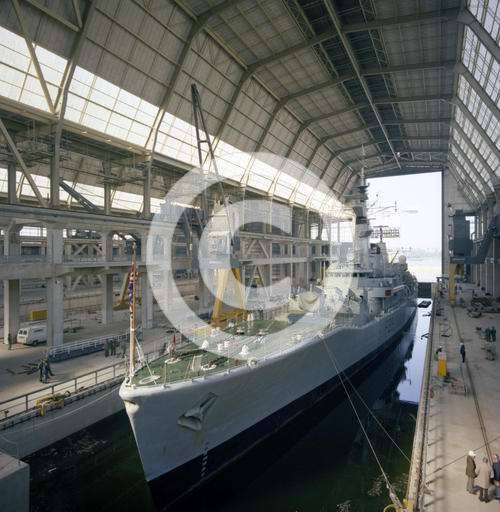
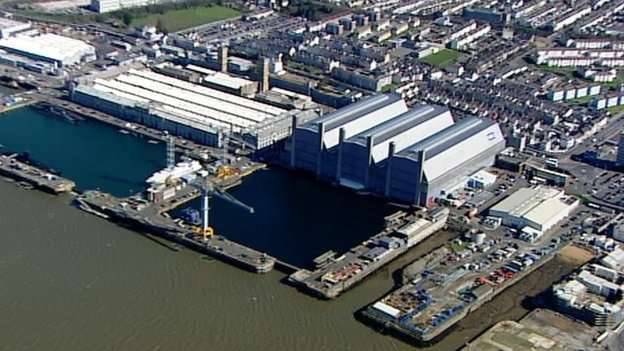
In order to minimize the length of the shafts, the engine rooms were located in compartments located as close as possible to the stern. The ships were to be equipped with two five-bladed screws with adjustable pitch. And at the stern, behind the flight deck, it was decided to allocate space for a helicopter hangar for almost the entire width of the ship to accommodate two deck helicopters.
On ships of the first series, the CAAIS from Ferranti Combat Information and Control System (BIUS) was installed, and as an energy installation - 2X turbos Rolls-Royce Spey SM1A (37,540 shp / 28 MW) and 2X Rolls-Royce Tyne RM3C (9,700X) turbines MW).
Work on the implementation of the order for the construction of ships of the first series was jerky, with frequent stops and approvals due to their relatively high cost. The fact is that their predecessors, the Linder type frigates (Type 12), cost the British crown 10 million pounds, the new Amazon type frigates (21 project) cost 20 million pounds each, and when placing an order on the first frigate of the 22 type, the unit cost was agreed upon in the amount of 30 million pounds. But the real cost of the first frigate of the 22 type HMS Broadsword after its commissioning in the 1979 year amounted to taking into account inflation as much as 68 million pounds.
For example, the destroyer HMS Glasgow (type 42), which was commissioned in the same 1979 year, cost the treasury 40 million pounds. Destroyers are a good thing, but frigates are also needed by a naval superpower. Therefore, for the construction of the first frigate type 22 still constantly pay extra. We can only guess what scenes accompanied the knockout of the next tranche.
After building 4-x 22 type frigates (1-series, subclass “Broadsword”), the covered naval dock of Devenport for frigates (Devonport Frigate Refit Complex) decided to increase in length (and, most likely, in depth too).
Therefore, after the lengthening of the docks, it became possible to build and maintain ships of greater displacement in them. And if the total length of 1-series frigates (“Broadsword” subclass) was 131 meters with a standard displacement of 4,400 tons, then the length of 2-series frigates (Boxer subclass) was 146,5 meters with 4,800 displacements tons.
Differences between subclasses
On ships of the 2 series (subclass “Boxer”) the stem was extended (sharpened).
The sharp stem was supposed to provide the ships with good seaworthiness. But along with the length of the ship and its displacement increased and its draft: if the frigates of the 1-series was 6,1 meters, then the 2-th (and subsequent 3-series) - already 6,4 meters.
In the 1982 year (the year the order was placed on HMS “London”) the cost of one 22 type frigate almost doubled and reached £ 127 million pounds sterling. But this was not the limit: the total cost of the Boxer frigate (F92) after its commissioning in the 1983 year amounted to £ 147 mln taking into account inflation.
The 3 ship Brave (F94) cost the most of all: it cost £ 166 million pounds. Perhaps due to the fact that the Rolls-Royce Spey SM1C turbines were installed on it.
* It is quite possible that, starting from the 2 series, the shipbuilders reduced the height of the helicopter hangars and the higher Westland Sea King, but only Westland Lynx, could no longer fit into them. At least I found this information in the descriptions of HMS Boxer (F92) and HMS Beaver (F93).
And since I’ve talked about the differences between subclasses, allow a few words to highlight the main differences of the 3 series. This subclass is the most well-armed of all three series built. They were due to the conclusions reached after the end of the conflict in the Falklands.
After that war, it became obvious that, in addition to missile weapons on British ships, cannon (universal) artillery and more effective short-range air defense weapons were needed. Multipurpose artillery would be useful for firing at coastal targets, while reinforced anti-aircraft artillery would be useful primarily for the missile defense of ships, as well as for hitting other enemy targets and light surface forces of the enemy.
Therefore, the armament of the 3-series frigates (subclass “Cornwall”) was different from the ships of the first two series. On the nose instead of the PU for the ASM Exocet, an 114-mm 114 mm / 55 Mark 8 shipboard universal installation was installed. In addition, the ships equipped 30-mm ZAK with a rotating block of Goalkeeper trunks, aka Sea Vulcan 30.
* 30-mm 7-barrel anti-aircraft gun “Goalkeeper” is a modification aviation guns GAU-8 Avenger, which is installed on the American attack aircraft A-10 Thunderbolt.
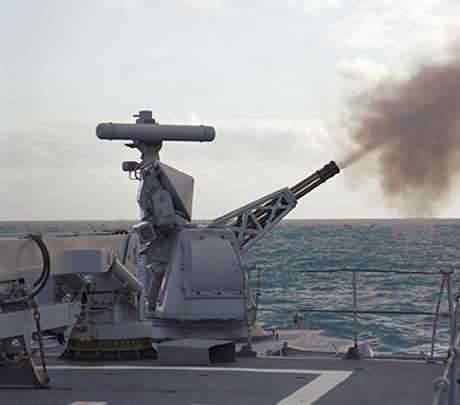
The main armament of the 3-series frigates consisted of:
2x PU for RGM-84 Harpoon PCR;
2x PU ZRK short-range GWS-25 Sea Wolf;
2x three-tube 324-mm torpedo tubes Plessey STWS Mk 2;
Also on the ships were installed:
2x 8-barrel 130-mm PU infrared interference BAE Systems Corvus;
2x 6-barrel 130-mm PU for shooting BAE Systems Mark 36 SRBOC dipole reflectors.
The length of the 3-series ships (a subclass of “Cornwall”) increased by 2 meters and amounted to 148,1 meters with a displacement of 5,300 tons and a draft of 6,4 meters.
And the stem in the underwater part ended with a boule (drop-shaped thickening), the shape of which is optimal from the point of view of hydrodynamic resistance. In the bule could easily place the sonar. On the 3-series ships, the 2 turbines Rolls-Royce Spey SM1A and 2 marching rolls-Royce Tyne RM3C are installed.
To be continued ...
Sources:
World Naval Weapons Systems, 1997-1998
http://ro.wikipedia.org/wiki/Fregata_M%C4%83r%C4%83%C8%99e%C8%99ti
http://ro.wikipedia.org/wiki/IAR_330
http://ro.wikipedia.org/wiki/NMS_M%C4%83r%C4%83%C8%99e%C8%99ti
http://it.wikipedia.org/wiki/Sparviero_%28esploratore%29
http://es.wikipedia.org/wiki/Clase_Ceuta
http://en.wikipedia.org/wiki/M%C4%83r%C4%83%C8%99ti-class_destroyer
http://www.helis.com/database/sys/386/
http://www.sirmarfittings.com/brave.html
http://ro.wikipedia.org/wiki/Fregata_Regele_Ferdinand
http://ro.wikipedia.org/wiki/Fregata_Regina_Maria
http://www.neodacii.com/content/istoricul-fregatei-marasesti
http://www.navweaps.com/We
http://topwar.ru/39218-sostoyanie-i-perspektivy-razvitiya-voenno-morskih-sil-rumynii-2013.html
http://zonwar.ru/morskoj/Fregati/Broadsword.html
http://www.nnre.ru/transport_i_aviacija/spravochniki_dzhein_boevye_korabli/p162.php
http://www.nnre.ru/transport_i_aviacija/spravochniki_dzhein_boevye_korabli/p162.php
http://www.korabli.eu/galleries/oboi/voennye-korabli/regina-maria
http://www.korabli.eu/galleries/oboi/voennye-korabli/marasesti
http://blackseaships.ru/korabli/rus/Rom_F111.html
http://www.tehnomil.net/2012/08/05/genealogia-turelelor-telecomandate-romanesti/
http://www.tehnomil.net/2012/05/30/variante-pentru-modernizarea-fregatelor-t22/
www.aripi-argintii.ro/aparatdezbor.php?p=52
http://www.rumaniamilitary.ro/puma-naval-sm-sau-super-puma
https://resboiu.wordpress.com/2011/07/22/regele-s-a-intors-marasestiul-a-plecat/
http://www.acttm.ro/en/research-centers/ccsfn/results
http://www.rumaniamilitary.ro/un-elicopter-antisubmarin-puma-naval-prima-varianta
http://www.losbarcosdeeugenio.com/barcos/en/ro/rom_F222.html
http://win.storiain.net/arret/num190/artic3.asp
http://flot.com/publications/books/shelf/narusbaev/6.htm
http://tsushima.su/forums/viewtopic.php?pid=380489
http://www.worldwar2.ro/operatii/?language=ro&article=776
http://www.naviecapitani.it/gallerie%20navi/navi%20militari%20storiche/schede%20navi/S/Sparviero%20-esploratore.htm
http://forum.worldofwarships.eu/index.php?/topic/69-marasti-class-destroyer/
http://forum.worldofwarships.eu/index.php?/topic/69-marasti-class-destroyer/
http://www.armada.mde.es/ArmadaPortal/page/Portal/ArmadaEspannola/_inicio_enlaces/prefLang_en/
http://www.kbismarck.com/mgl/destruc.htm
http://observator.ro/datoria-de-peste-144-milioane-lei-a-snm-stearsa-cu-buretele-74103.html
https://ziaruldeinvestigatii.ro/blog/posts/statul-ascunde-de-investitori-datoriile-santierului-naval-mangalia
http://incomemagazine.ro/articles/santierul-naval-militar-din-mangalia-a-obtinut-un-contract-de-la-mapn
http://www.mangaliaparc.ro/index.html
http://www.marina.difesa.it/storiacultura/storia/almanacco/Pagine/ABCD/aquila_esploratore.aspx
http://www.marina.difesa.it/storiacultura/storia/almanacco/Pagine/EFGHI/falco.aspx
http://www.marina.difesa.it/storiacultura/storia/almanacco/Pagine/PQRS/sparviero_avviso.aspx
http://www.tehnomil.net/2012/05/30/variante-pentru-modernizarea-fregatelor-t22/
http://www.armada.cl/armada/unidades-navales/superficie/fragatas/ff-19-almirante-williams/2014-04-15/111211.html
http://www.armada.cl/armada/unidades-navales/aviacion-naval/helicoptero/sh-32-cougar/2014-04-17/161222.html
http://www.taringa.net/posts/offtopic/18611532/Armada-de-Chile-SH-32-Cougar-helicoptero-ASW-y-ASuW.html
http://www.defensa.pe/forums/showthread.php/2887-La-fragata-Williams-y-su-modernizaci%C3%B3n
http://romaniaforum.info/board3-marina-romana-romanian-navy/board636-armament-naval/board683-elicoptere-navale-maritime-helicopters/1480-i-a-r-330-puma-naval/#post4232
http://www.hollilla.com/reader.php?action=thread&thread=2982825&offset=630
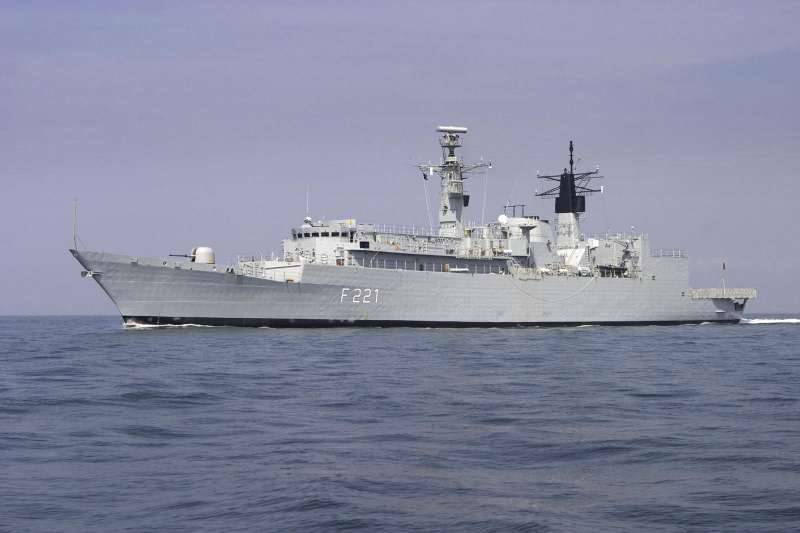
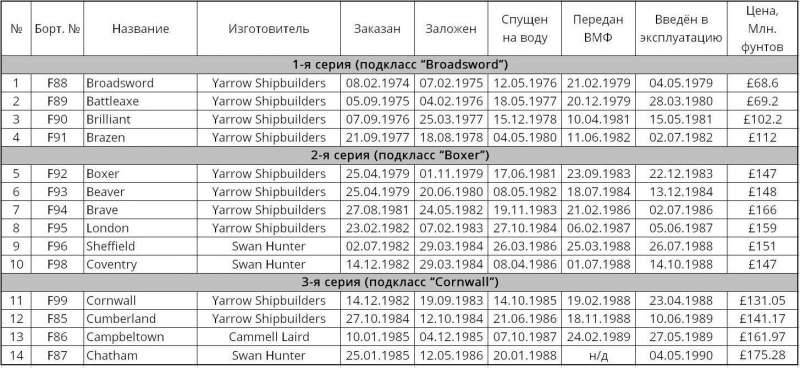
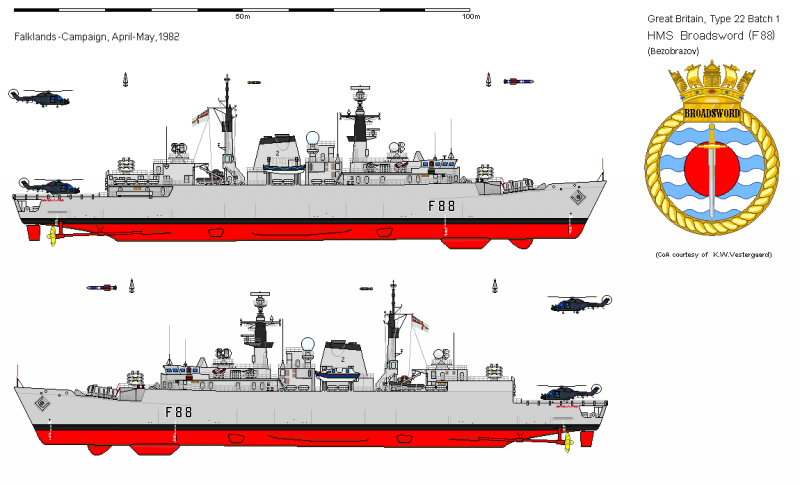
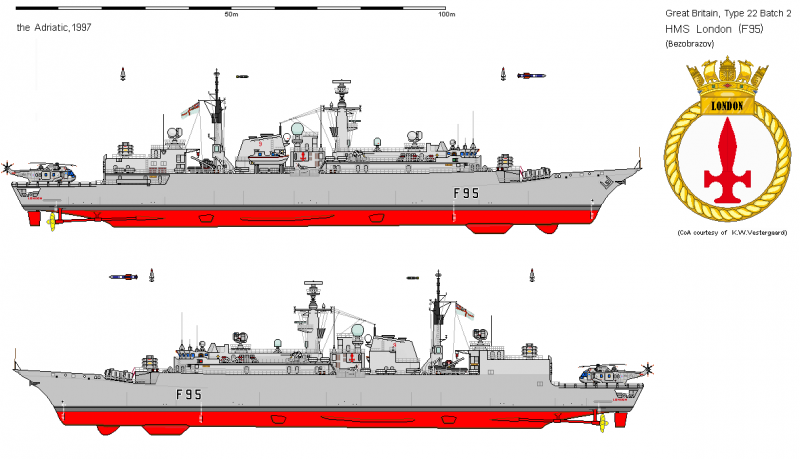
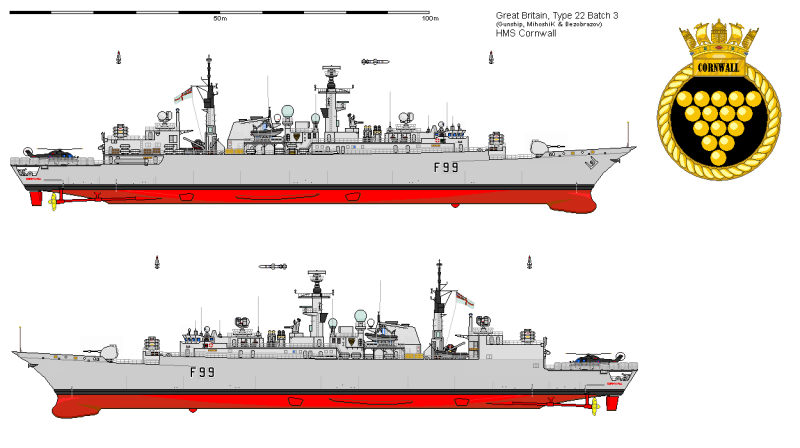
Information